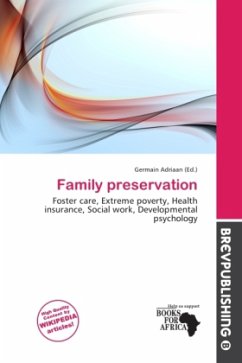Please note that the content of this book primarily consists of articles available from Wikipedia or other free sources online. Family preservation was the movement to help keep children at home with their families rather than in foster homes or institutions. This movement was a reaction to the earlier policy of family breakup, which pulled children out of unfit homes. Extreme poverty alone was seen as a justified reason to remove children. This new movement began in the 1890s, and in the 1909 White House Conference on Children it was the top ranked issue. In order to keep families together, the family would be given enough money so that the mother would not have to work a full time job. The families that were given this assistance were usually headed by widows. Family preservation stems back to the poor laws of the late-eighteen and early-nineteen hundreds. Child-Saving was the theme of the era. With the new labor laws for children, the emphasis on the newly developed child psychology and the fear of family disintegration, social workers put a greater emphasis on the child, who was no longer considered just a smaller adult. Before this, children were systematically taken out of homes if parents did not make enough income to support them.
Bitte wählen Sie Ihr Anliegen aus.
Rechnungen
Retourenschein anfordern
Bestellstatus
Storno








